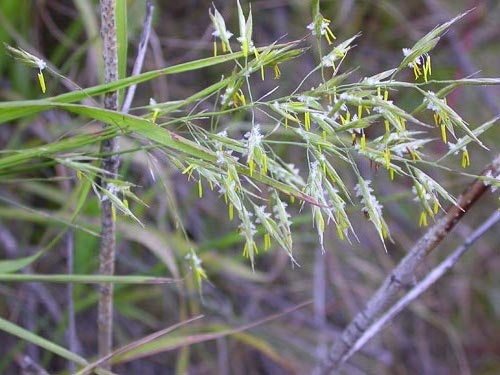Relatives
Bromopsis riparia (Rehm.) Holub - Meadow brome.
Systematic position.
Family Poaceae Barnhart Genera Bromopsis Fourr.Synonyms.
Bromus riparius Rehm., Zerna riparia (Rehm.) NevskiMorphology and biology.
Perennial, short rhizomatous, spongy cespitose grass. Height is 30-120 cm tall. Decaying sheath of old leaves covers the lower part of the stem. Leaf is 20-40 cm long, 2-4 mm wide, pubescent. Leaf lingula is 0.5 mm long for lower leaves and 3 mm long for upper ones. Inflorescence is a drooping panicle, up to 7-15(20) cm long. Spikelet is 1.8-3 cm long. Lower floral glume is 10-14 mm long, with a straight awn (5-9 mm long), thick, short hairs, golden glumaceous edges and a violet back. Cross-pollinated and wind-pollinated. Flowers from June-August. Seed and vegetative reproduction. Chromosomal numbers 2n=28, 42, 56.Distribution.
European region of the former USSR, Caucasia, Southwestern Siberia, the Far East, Central Asia (invasive), and southeastern Central Europe.Ecology.
Species occurs in dry meadows, in steppes, in forest clearings, and in brush woods; grows as high as the base of the mountain zones.Economic value.
Forage, for haying and pasture use. It is enjoyed by cattle.Reference citations:
Cherepanov S.K. 1988. Plantae Vasculares Rossicae et Civitatum Collimitanearum (in limics USSR olim)[List of Vascular Plants of Russia]. St. Petersburg: Mir I Semia. 990 pp. (In Russian)Gubanov I.A., Kiseleva K.V., Novikov V.S., Tychomirov V.N. 2002. Illustrated Keys to the plants of Middle Russia. V. 1. Moscow. 526 p. (In Russian)
Tzvelev N.N. 1976. Poaceae USSR. Leningrad: Nauka. 788 pp. (In Russian)


